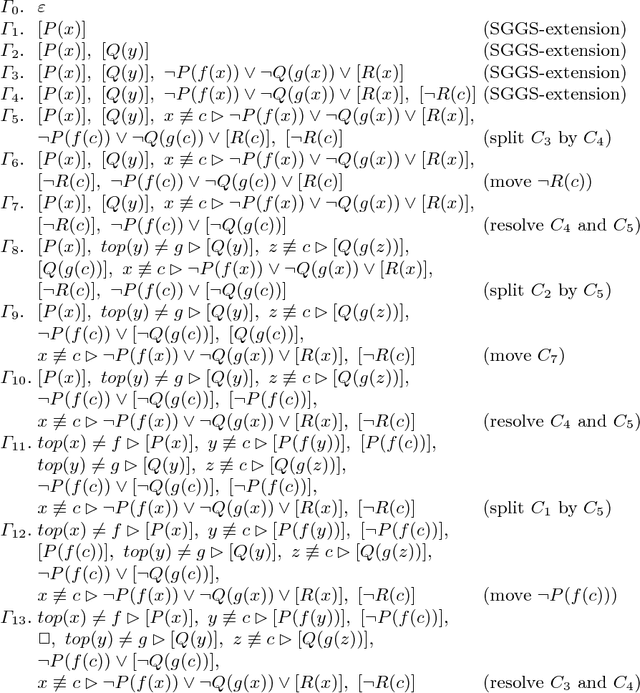Maria Paola Bonacina
Università degli Studi di Verona, Italy
Proof Generation in CDSAT
Jul 06, 2021Abstract:The main ideas in the CDSAT (Conflict-Driven Satisfiability) framework for SMT are summarized, leading to approaches to proof generation in CDSAT.
* In Proceedings PxTP 2021, arXiv:2107.01544
On First-Order Model-Based Reasoning
Jul 31, 2015

Abstract:Reasoning semantically in first-order logic is notoriously a challenge. This paper surveys a selection of semantically-guided or model-based methods that aim at meeting aspects of this challenge. For first-order logic we touch upon resolution-based methods, tableaux-based methods, DPLL-inspired methods, and we give a preview of a new method called SGGS, for Semantically-Guided Goal-Sensitive reasoning. For first-order theories we highlight hierarchical and locality-based methods, concluding with the recent Model-Constructing satisfiability calculus.
New results on rewrite-based satisfiability procedures
Jun 01, 2008



Abstract:Program analysis and verification require decision procedures to reason on theories of data structures. Many problems can be reduced to the satisfiability of sets of ground literals in theory T. If a sound and complete inference system for first-order logic is guaranteed to terminate on T-satisfiability problems, any theorem-proving strategy with that system and a fair search plan is a T-satisfiability procedure. We prove termination of a rewrite-based first-order engine on the theories of records, integer offsets, integer offsets modulo and lists. We give a modularity theorem stating sufficient conditions for termination on a combinations of theories, given termination on each. The above theories, as well as others, satisfy these conditions. We introduce several sets of benchmarks on these theories and their combinations, including both parametric synthetic benchmarks to test scalability, and real-world problems to test performances on huge sets of literals. We compare the rewrite-based theorem prover E with the validity checkers CVC and CVC Lite. Contrary to the folklore that a general-purpose prover cannot compete with reasoners with built-in theories, the experiments are overall favorable to the theorem prover, showing that not only the rewriting approach is elegant and conceptually simple, but has important practical implications.
* To appear in the ACM Transactions on Computational Logic, 49 pages
 Add to Chrome
Add to Chrome Add to Firefox
Add to Firefox Add to Edge
Add to Edge